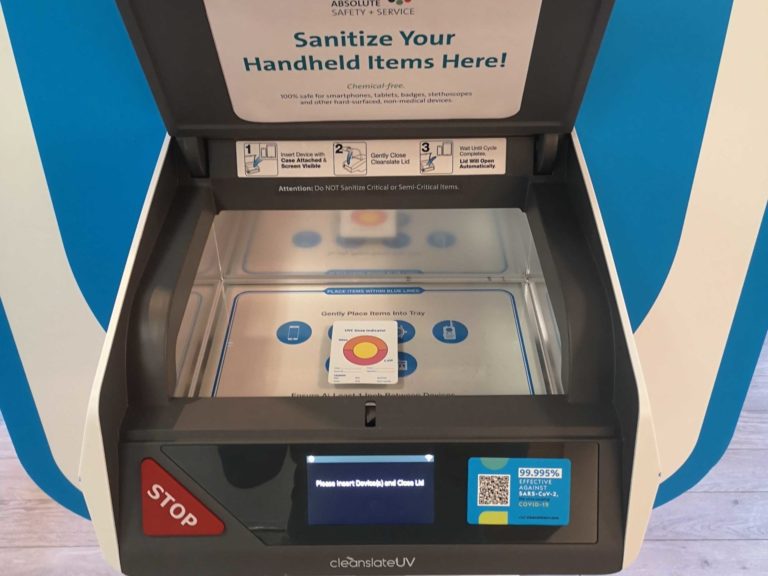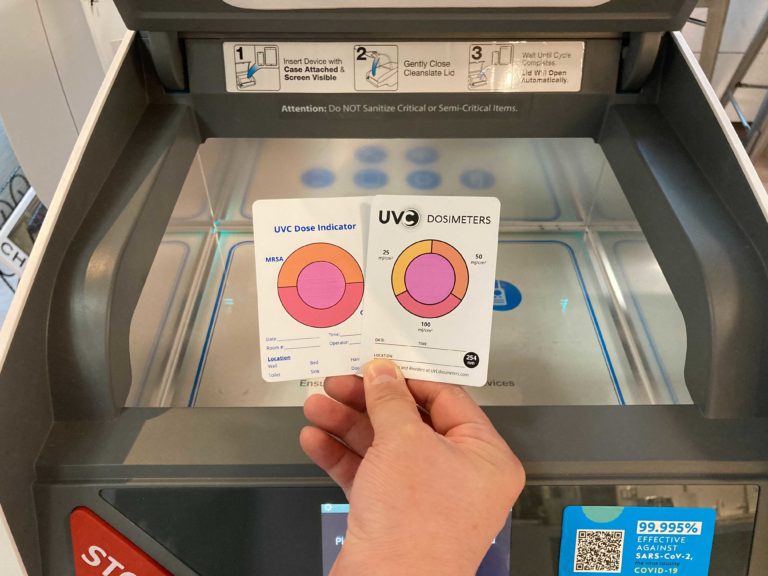Antimicrobial resistance is a growing issue that drastically affects public health and the economy all over the world. Causing around 700,000 deaths worldwide, it is crucial to find ways to increase sanitization measures to fight antimicrobial resistance. Due to this, the UVC sanitizer market has been growing over the past couple of years. From wands, lamps, and boxes, many UV sanitizer products have appeared in many shapes and sizes and for many different uses.
But how can organizations know that their UV sanitizers are effectively inactivating such bacteria and viruses? We’ll go over what works and what doesn’t when it comes to how you should UV sanitizers.
How Does UV Light Work?
Germicidal UVC light disrupts the DNA and RNA of pathogens, eliminating their ability to replicate. It does not physically remove the cells. This technology works by line of sight, so the light must reach a surface for bacteria or viruses to be inactivated.
Can an ATP Test Validate the Efficacy of a UV Sanitizer?
ATP testing is a technology used to quickly analyze the amount of bio-load on a surface. This type of testing is regularly used in food processing and healthcare facilities to assess the cleanliness of the environment. This test can see how many organic items are on a surface (i.e.; bacteria!) through ATP detection (a molecule found in all living things). Thus, the principle is that the less ATP detected the cleaner the surface.
Often, many people use this to test the effectiveness of their UV sanitizers. However, this is not the best way to test if a UV sanitizer works. And here’s why…
Why don’t ATP levels decrease after UVC light treatment?
Since the light from UV sanitizers only targets DNA and RNA in bacterial and viral cells without the act of physical cleaning, the ATP levels on that surface will not show a significant decrease.
The organic load remains, but the bacteria and virus have been completely inactivated! No longer able to replicate and no longer infectious!
What does this mean?
This explains why the results from an ATP test or other culture-based compliance tests may remain positive after being sanitized by a UVC sanitizer, including the CleanSlate.
It is important to remember that a positive ATP test result does not mean that the UVC sanitizer did not work. These bacterial and viral cells no longer pose a risk to individuals as they can no longer replicate, meaning that they are no longer infectious agents.
If not ATP, then what’s the best way to validate a UV Sanitizer?
UVC Dosimeters are used to validate successful doses of germicidal irradiation from ultraviolet devices. The dosimeter cards change in colour based on the accumulated dose of invisible UVC irradiation that is delivered to a surface. The colours represent the different levels and doses of UV exposure, and specific doses are needed to inactivate different viruses and bacteria.
It is an effective, efficient, and accurate way to know if a UVC sanitizer works!
To use it with a UV sanitizer like CleanSlate, you simply need to:
- Place the dosimeter card inside a CleanSlate UV sanitizer
- Run the 20-second disinfection cycle
- Take the card out of the CleanSlate UV sanitizer and compare it to the reference codes to know the UV exposure achieved


Efficacy of the CleanSlate UV Sanitizer
CleanSlate UV is 3rd party validated and proven to inactivate target bacteria and viruses. After the 20-second cycle from our UVC sanitizer, it is proven to be effective in inactivating 99.995% of SARS-CoV-2 and >99.9998% of Methicillin-Resistant Staphylococcus aureus (MRSA).
At CleanSlate UV, we ensure that our UV sanitizer meets high standards to help provide a cleaner facility for all.


